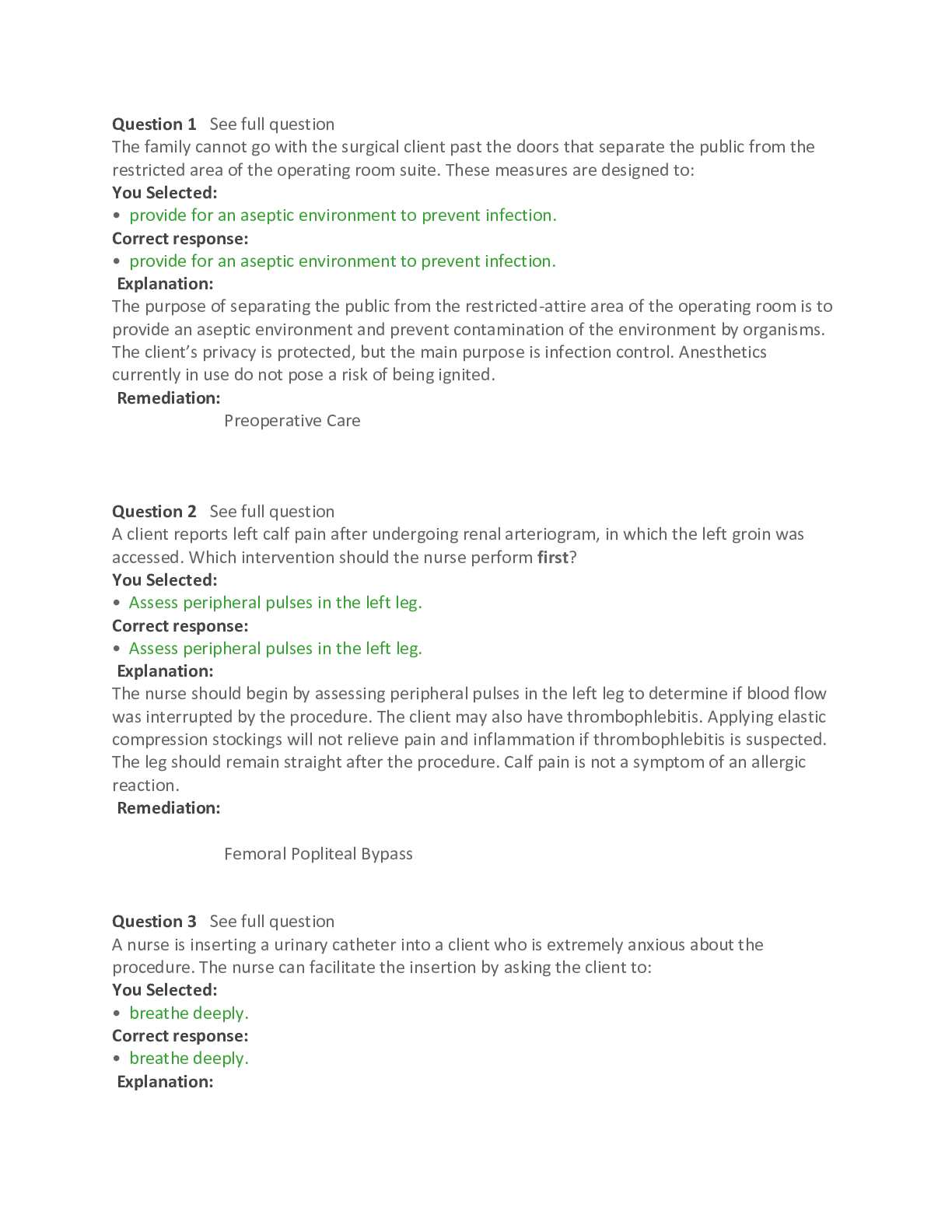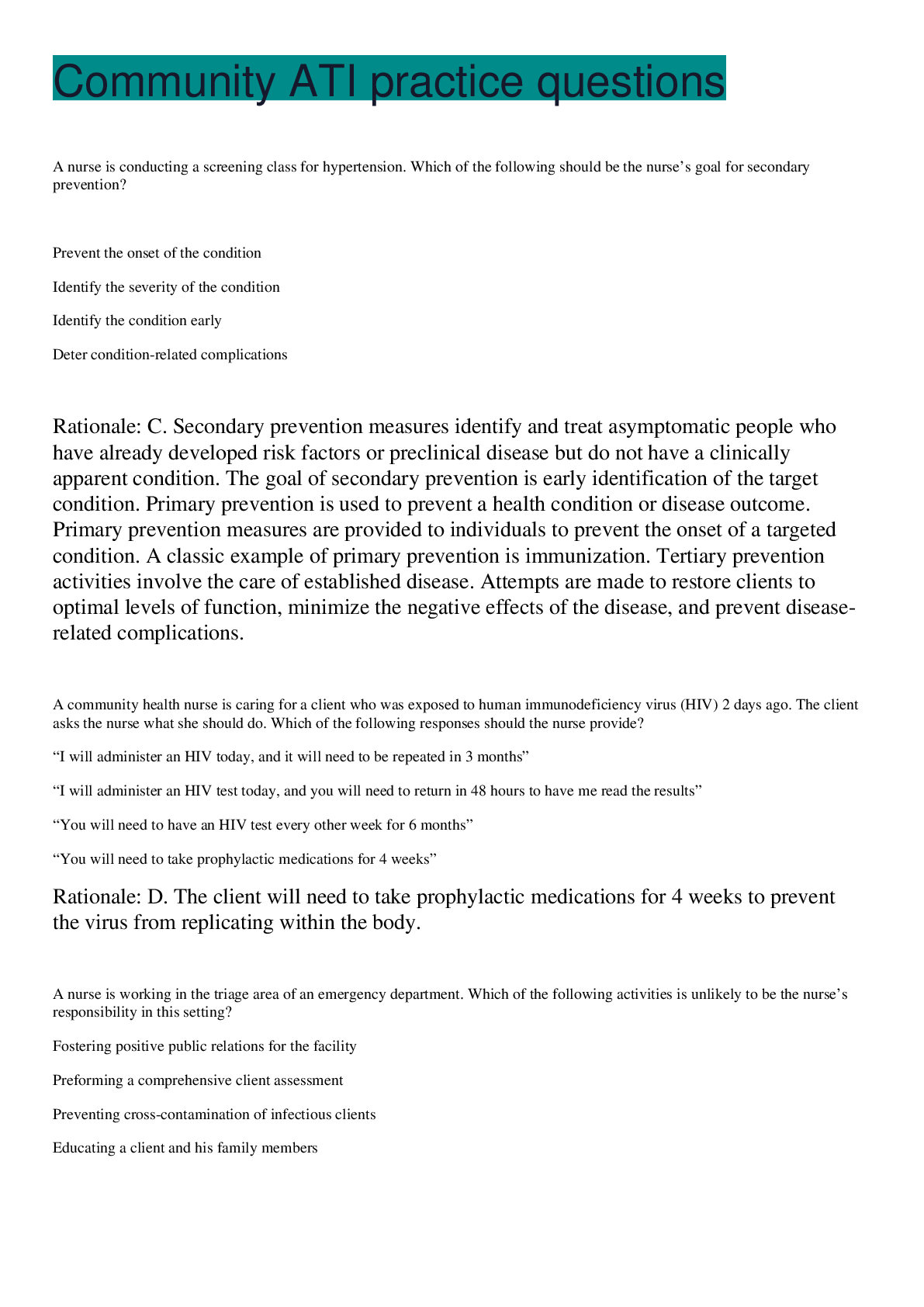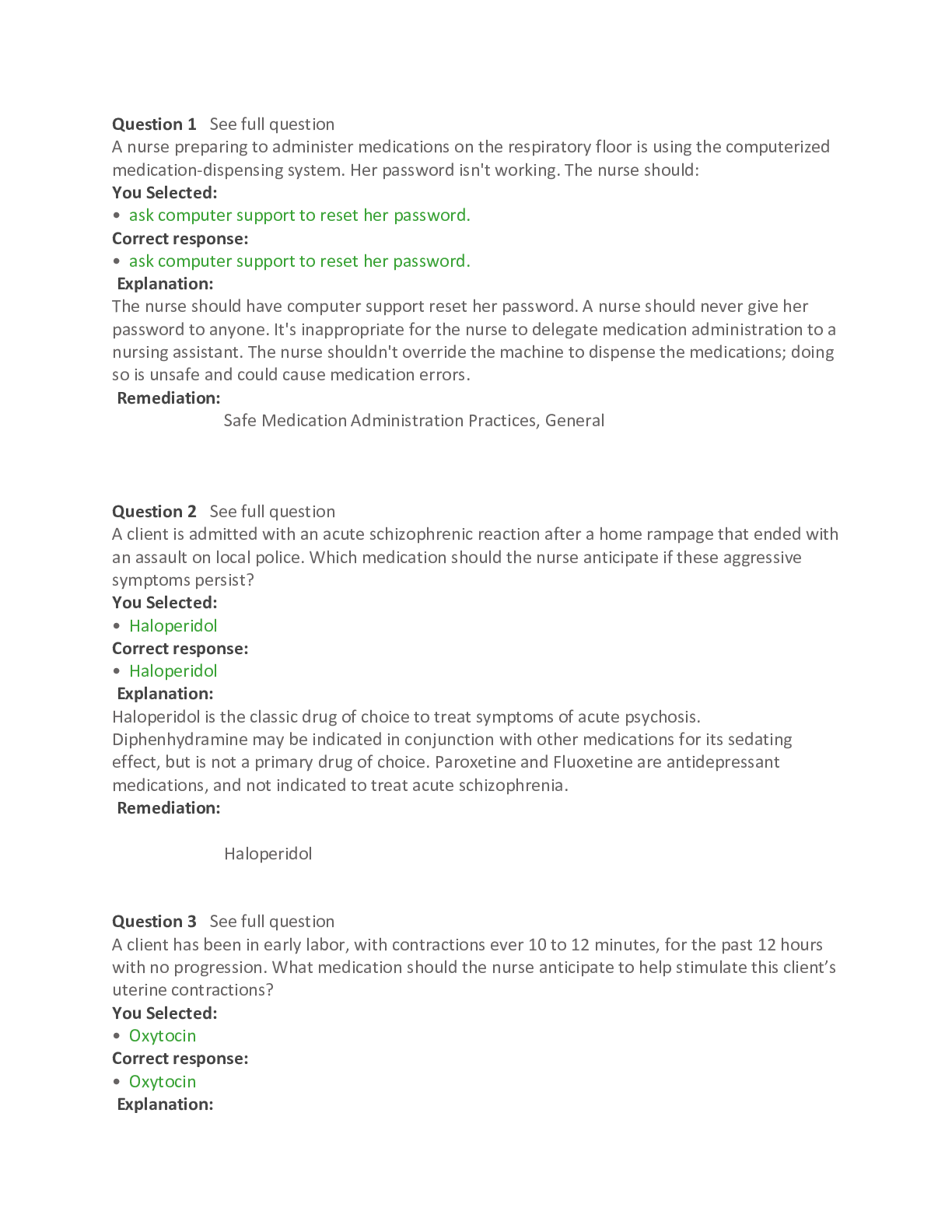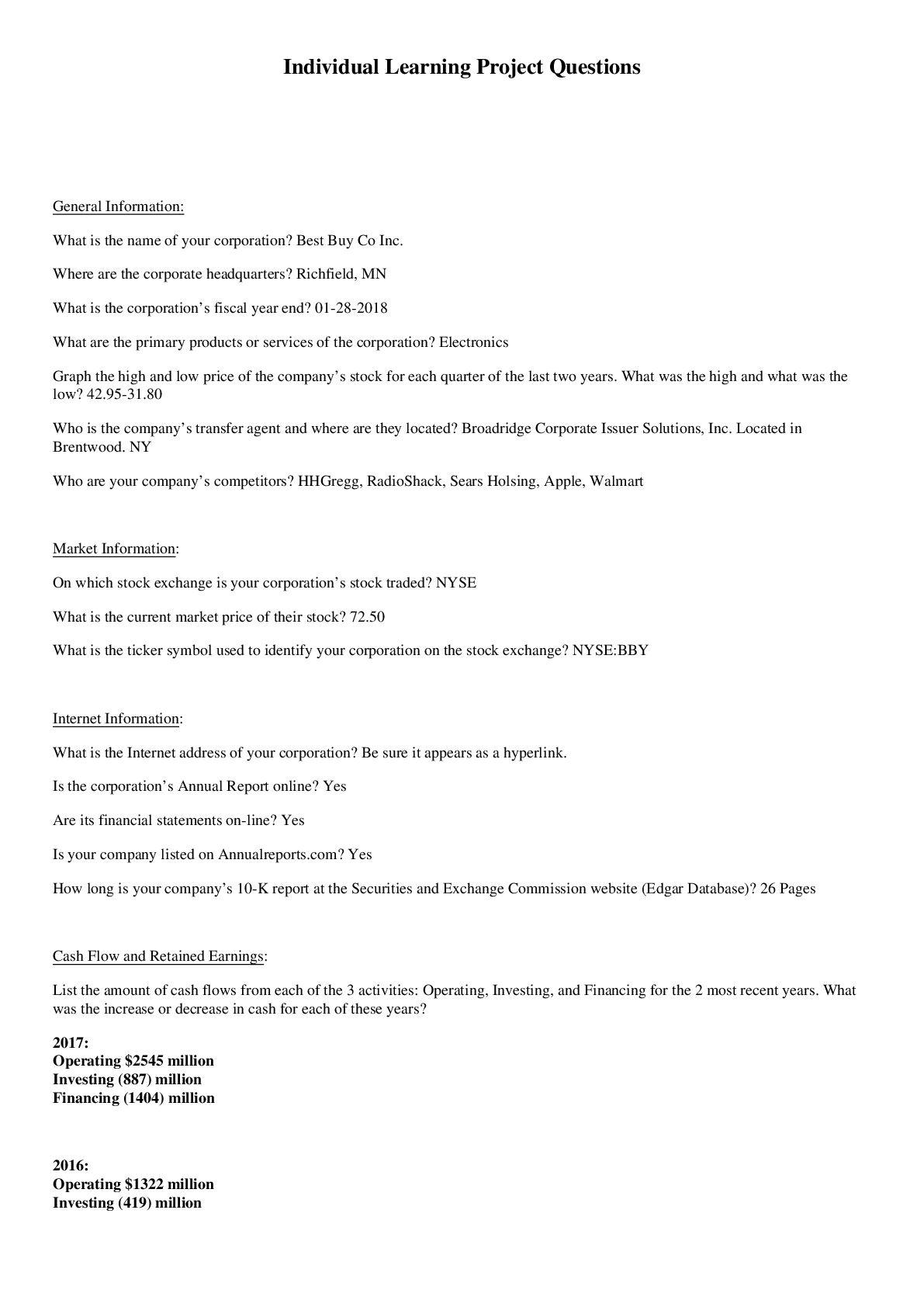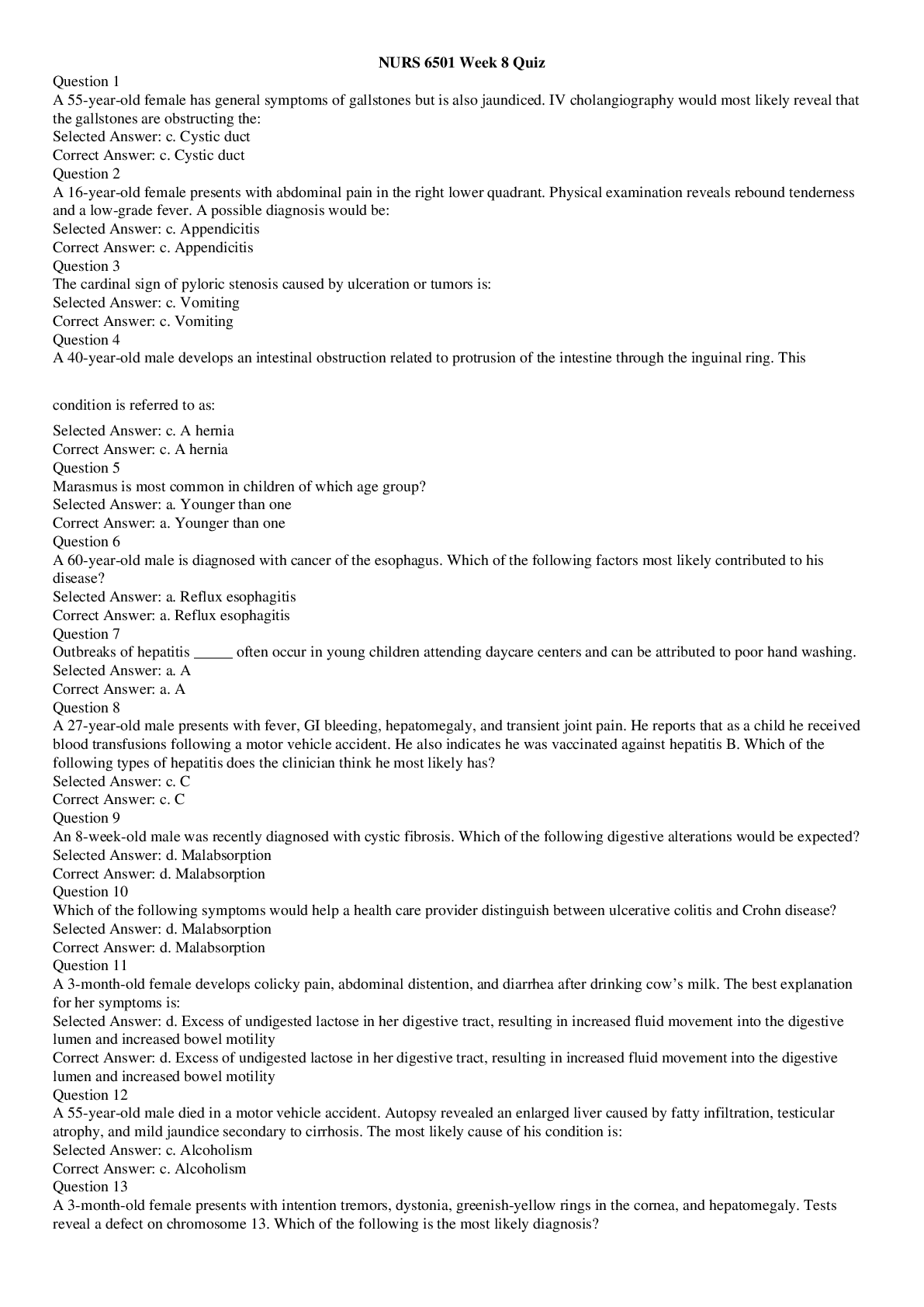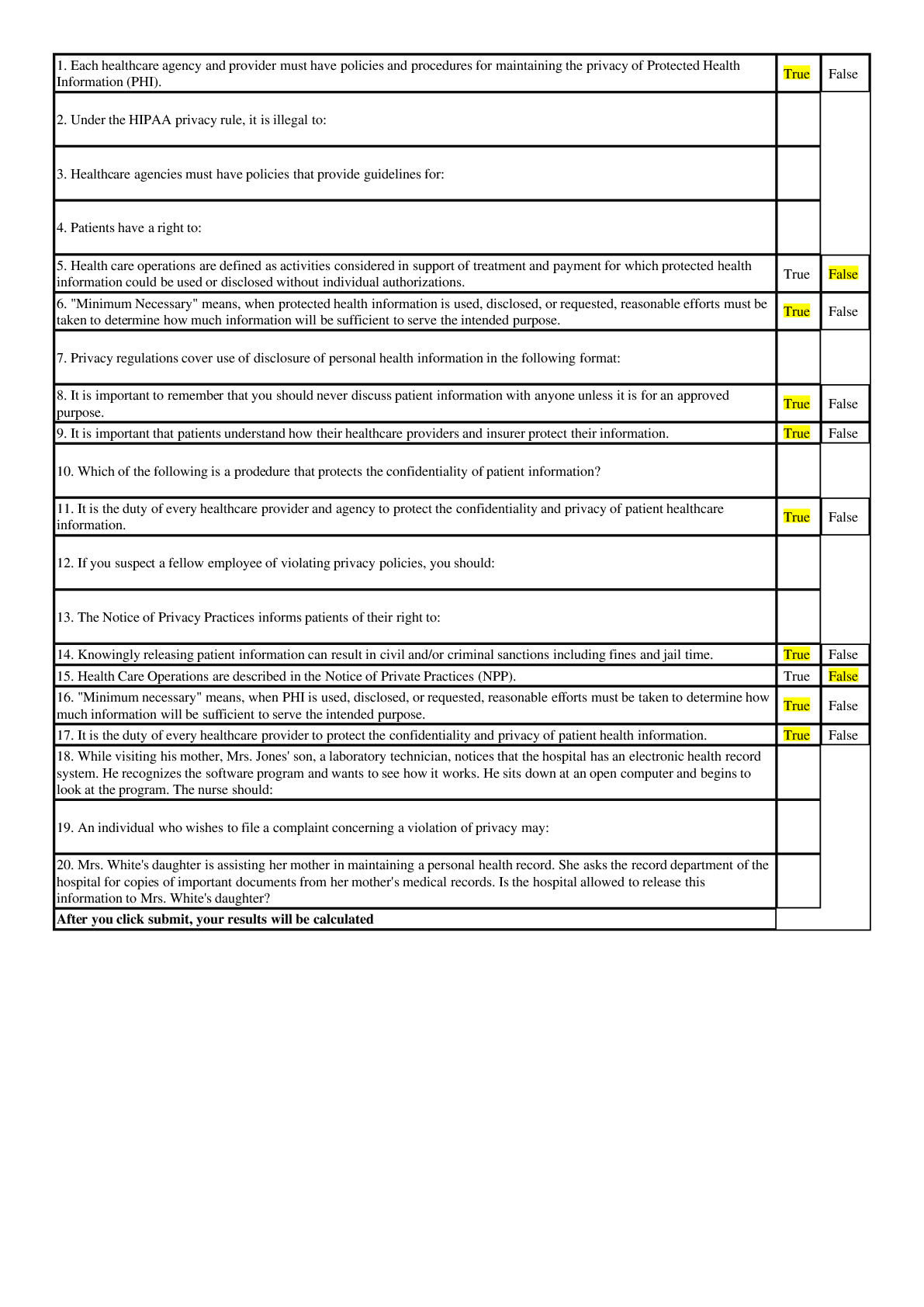Anthropology > STUDY GUIDE > University of Arizona ANTH200: Exam 1 Study Guide- ANTH 200. Plus Questions and Answers (All)
University of Arizona ANTH200: Exam 1 Study Guide- ANTH 200. Plus Questions and Answers
Document Content and Description Below
You should know the following key concepts, mostly from Miller but some from lecture, and their significance for anthropology [any definition a person off the street who has not taken our class coul... d give is not sufficient] the ability of humans to make choices and exercise free will even within dominating structures. Chapter 2 Autonomy of culture- Collaborative research- An approach to learning about culture that involved anths working with members of the study population as partners and participants rather than Chapter 3 Agriculture- a mode of livelihood that involves growing crops with the use of plowing, irrigation, and fertilizer Chapter 4 Chapter 5 Applied medical anthropology Chapter 6 Arranged marriage 1. Define general anthropology and its four fields and their goals and approaches. Define general anthropology and its four fields and their goals and approaches. 2. Explain what is distinctive about cultural anthropology compared to the other three fields of anthropology and in comparison to some other disciplines 3. Define the concept of cultural relativism and assess its strengths and limitations. Discuss approaches to defining the concept of culture. Define what microcultures are and on what bases they are formed; provide examples. 6. Discuss the relevance of cultural ant 6. Discuss the relevance of cultural anthropology for the contemporary world. 7. What kinds of careers do cultural anthropologists have? 8. What was the place of “race” in early 19th century discussions of “cultural evolution”? 9. What do most cultural anthropologists today think about cultural evolution? 10. Who was Franz Boas, and what is his significance for cultural anthropology? What then prominent approaches did he reject, and what approaches did he encourage in the discipline? • Explain how the research goals of cultural anthropology influence the selection of methods for data gathering and analysis. 1. Recognize the difference between etics and emics. 2. Define participant observation, what it involves, and why it is the central research method in cultural anthropology. 3. Explain how microcultural differences affect research in cultural anthropology. 4. Name several special types of data gathered by cultural anthropologists and provide an example of what they reveal. 5. Describe key differences between qualitative and quantitative data, how the two types of data are analyzed, and what they reveal about culture. 6. Discuss ethical issues in cultural anthropology research and how anthropologists face them. 7. List major safety issues in cultural anthropology research and know how they can be better addressed. 8. Who is Marshall Sahlins? What approaches to culture does Sahlins critique, and what approach does he endorse? How does Sahlins respond to the notion that war in human history is an effect of human aggression in the individual? What does he propose instead? 9. Does Sahlins see humans as really “naturally and universally” cost-benefit analyzing, profit maximizing, autonomy seeking individuals? Where does he argue we got this notion from? 1. Explain how cultural anthropology approaches the subject matter of economics, especially how people make a living. 4. Explain what cultural anthropologists say are some of the drawbacks of agriculture and industrialism/informatics. 5. Differentiate between categories of exchange and how they vary in non-market and market societies. V9. If the logic of market exchange is not naturally universal, why is it arguably nonetheless spreading around the world? Chapter 4 1. Explain the differences among the three modes of reproduction. 2. Describe the different cultural patterns of sexual intercourse frequency and how they relate to fertility. 3. Discuss why cultural anthropologists think that "family planning" is as old as humanity. 4. Review examples of cross-cultural techniques of fertility control. Indirect means (suppresses ovulation) Women’s low fat diet and work/exercise Prolonged breast-feeding Direct means Induced abortion Infanticide (killing after birth) 5. Recognize how different cultures shape personality and a sense of identity during childhood and how these differences relate to the mode of production. 6. Describe how homosexuality is variably defined cross-culturally and often accepted without stigma. 7. Discuss the concept of gender pluralism and identify some contexts where it exists. 8. Explain how parent roles differ and resemble each other cross-culturally. 9. Describe how elders are treated in various cultures and how attitudes toward death vary cross-culturally. 10. Consider women dress and its connection to the issue of their domination by men. What differences and what similarities do you see in, say, skimpy womens clothing and Muslim womens veils? Whose gaze is behind the logic of each? Chapter 5 1. Compare the three major theoretical approaches within medical anthropology and explain how they each contribute to understanding health and illness cross-culturally. 2. Explain how culture interacts with ecology to shape disease patterns. 3. Explain how ethnomedical systems variously define the body, perceive of the relationship between the body and disease, and define symptoms. 4. Provide examples of ethnomedical variation in preventing, diagnosing, and treating disease. 5. Discuss the role of poverty, gender inequality, and other forms of structural violence in the distribution of disease/illness. 6. Describe what critical medical anthropology research reveals about Western biomedical training. 7. List examples of how cultural anthropology can contribute to improved health care delivery. 8. Discuss the complexities involved in cultural change in the area of health care, especially medical pluralism and health communication in multicultural contexts. 9. What is the difference between the changes Japanese women’s bodies go through and “menopause”? As it is defined in the US, do Japanese women experience menopause? What symptoms do they complain about? 10. What is “medicalization” and what impact does it have on how people think about themselves and who they are? What kinds of problems does medicalization tend to tell people they have, who tells them this, and what kinds of treatments are usually prescribed? Chapter 6 1. Why is the study of kinship important for anthropologists, even if their focus is on other aspects of culture? 2. Define kinship and its three bases (descent, marriage and sharing). 3. Explain how unilineal and bilineal descent correspond with different modes of production and some factors of production involved. 4. Describe how patrilineality and matrilineality work, and name the implications for male and female status in society. 5. What is sharing, as a basis of kinship, and what are examples? 6. Define family and household. 7. Discuss problems in finding a universal definition of marriage. 8. Distinguish cross-cultural variations of spouse selection. 9. Know major types of exchanges made at marriages and how they are related to the cultural context. 10. Consider the US cultural preference for “love matches” as the basis of marriage. What other aspects of US culture is this preference related to? 11. Drawing on readings about India and Japan, discuss marriage. What is the difference between an arranged marriage and a forced marriage? Why are arranged marriages rarely “forced” marriages? What effects does not dating have on many Indian girls’ sense of confidence? [Show More]
Last updated: 1 year ago
Preview 1 out of 24 pages
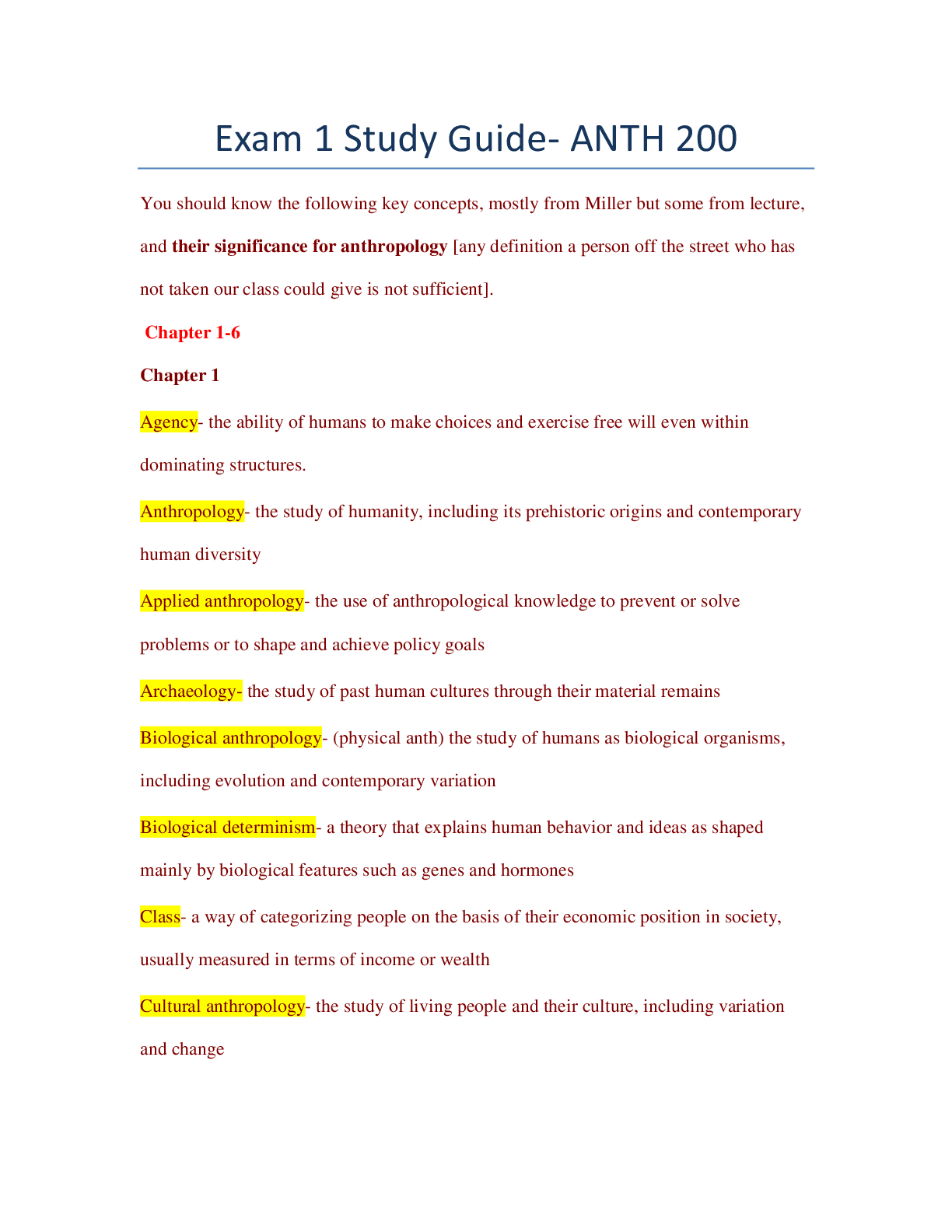
Reviews( 0 )
Document information
Connected school, study & course
About the document
Uploaded On
May 11, 2020
Number of pages
24
Written in
Additional information
This document has been written for:
Uploaded
May 11, 2020
Downloads
0
Views
72




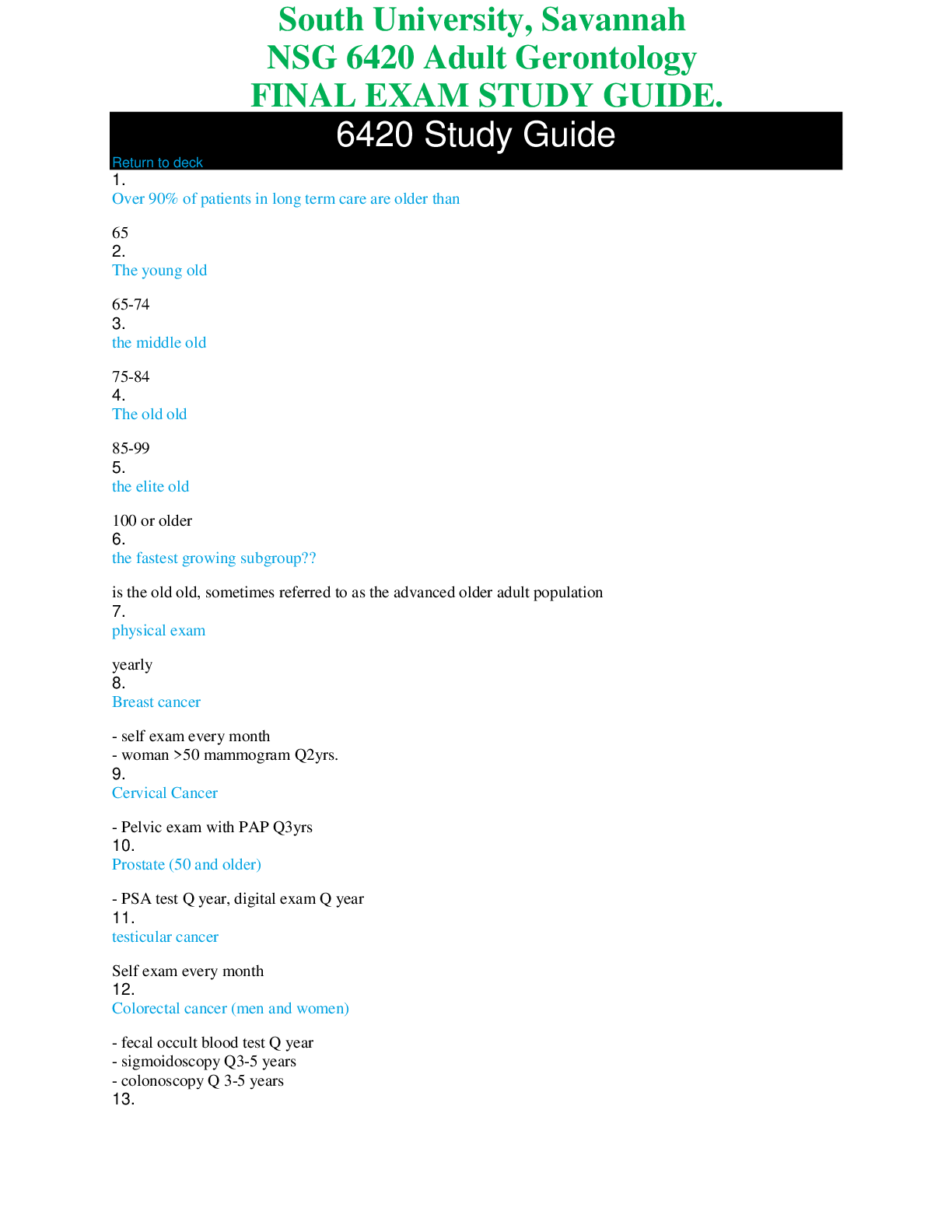

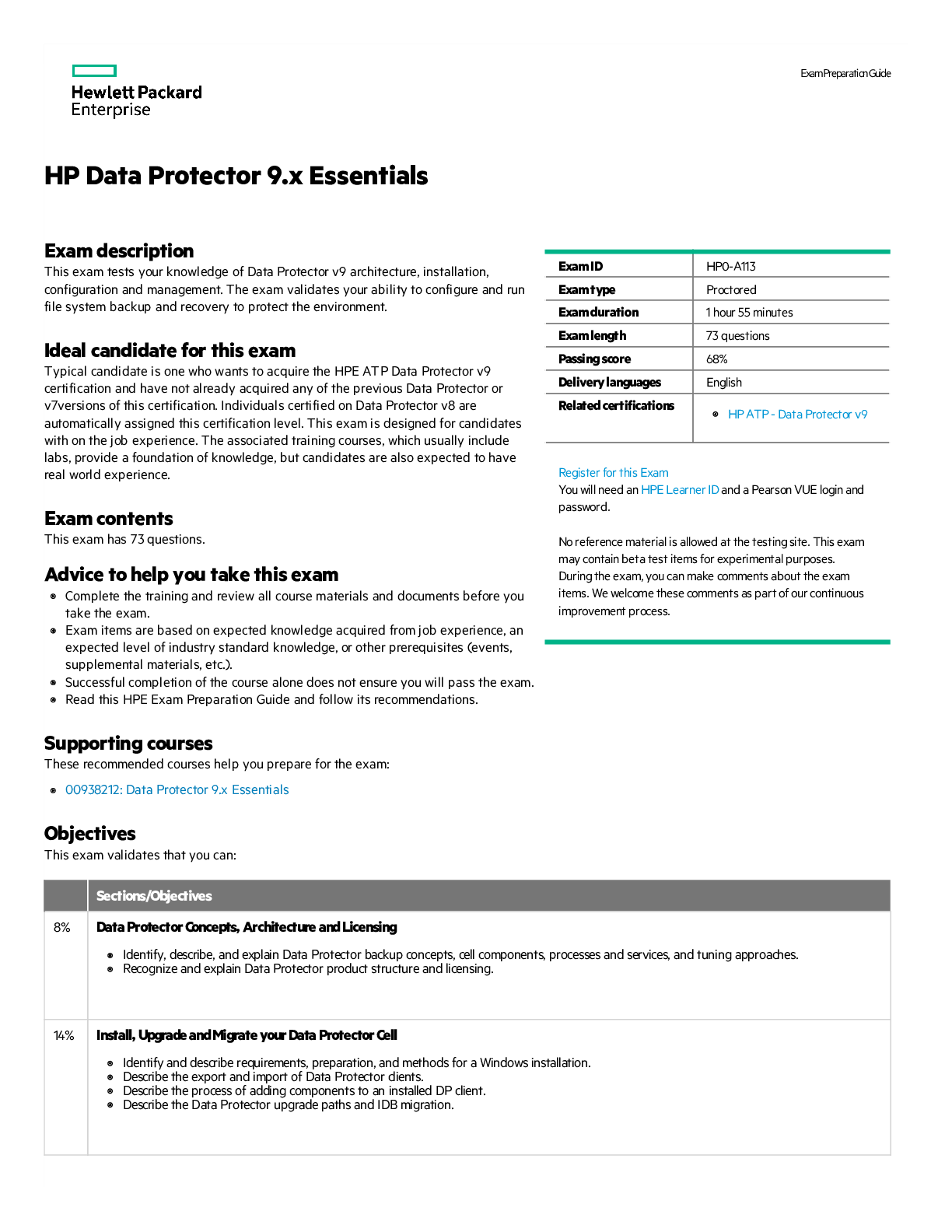



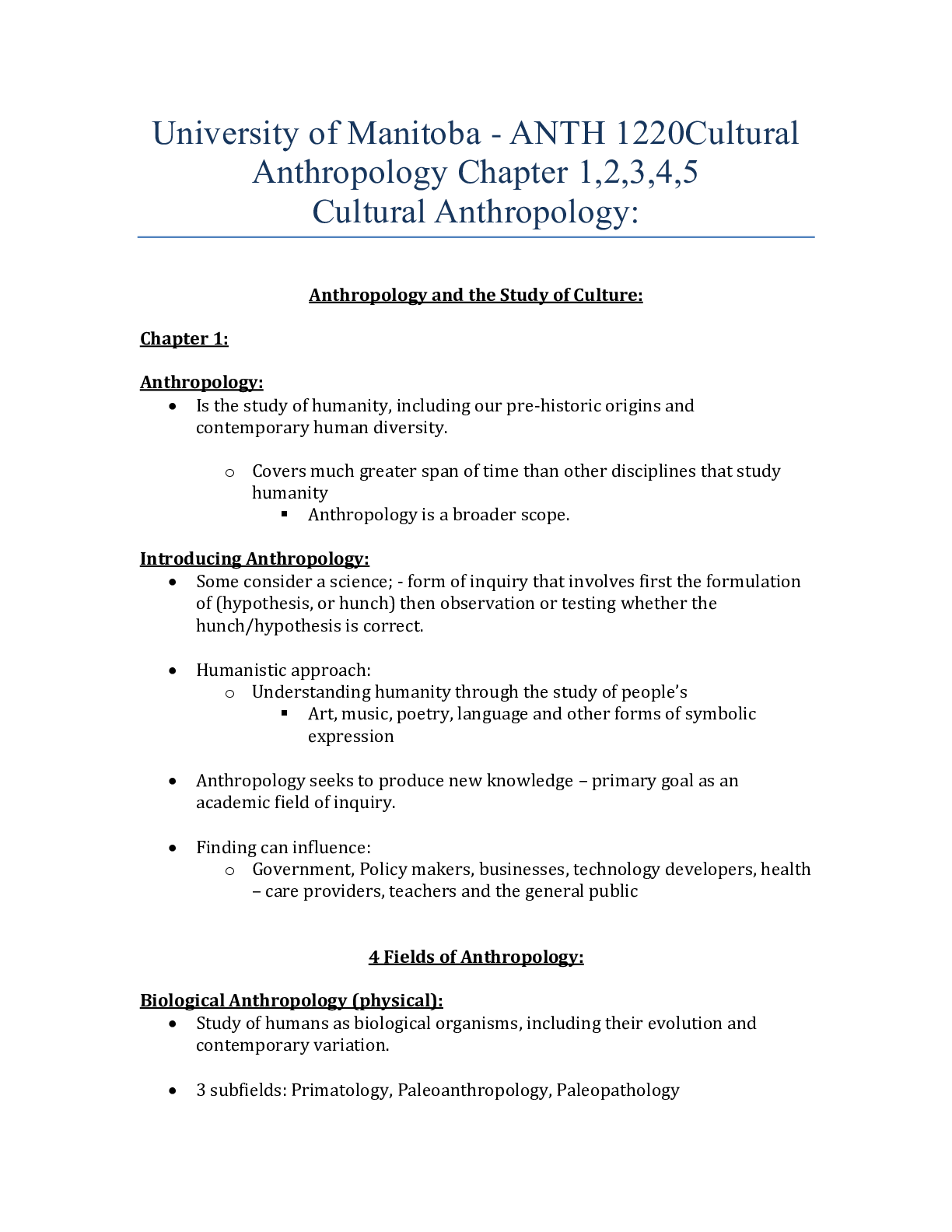



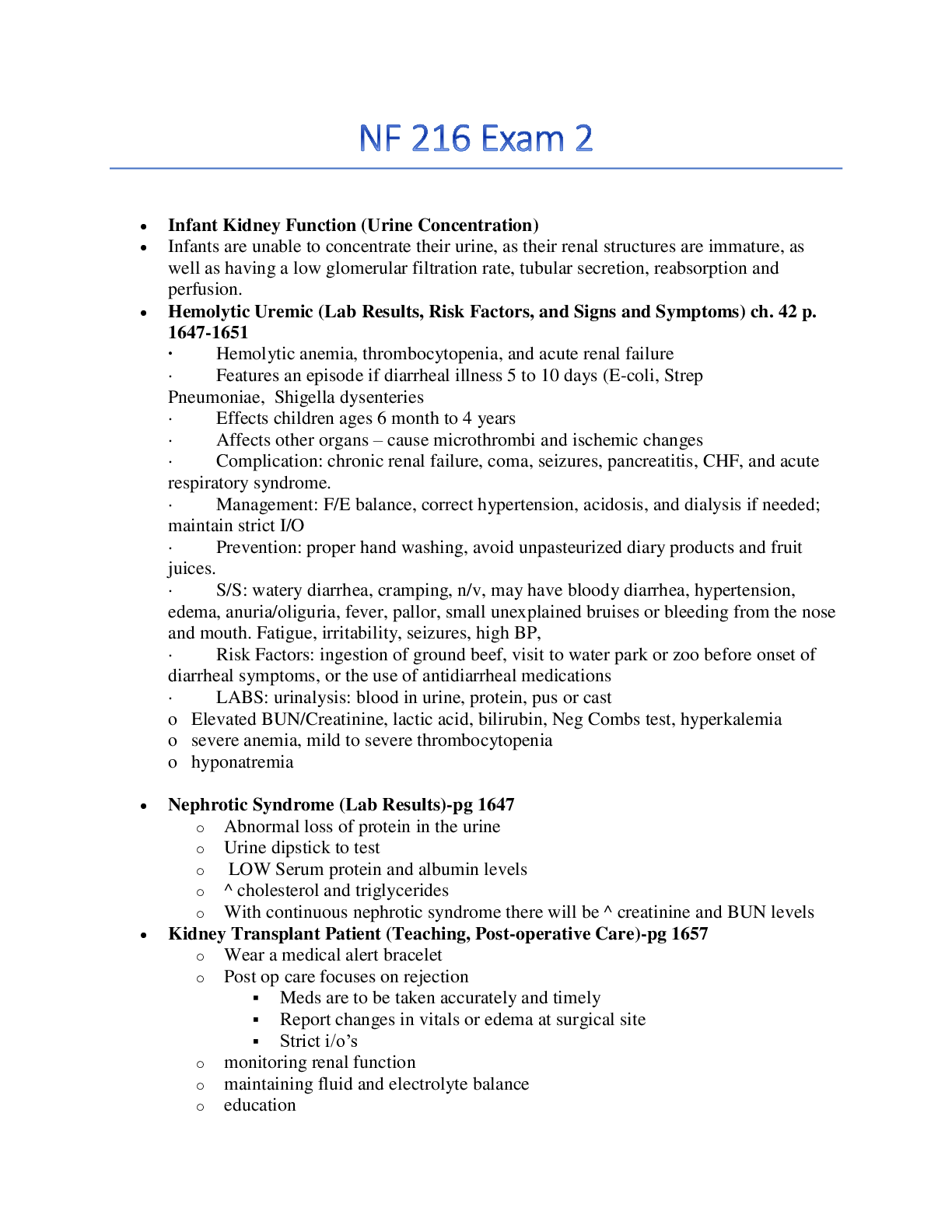
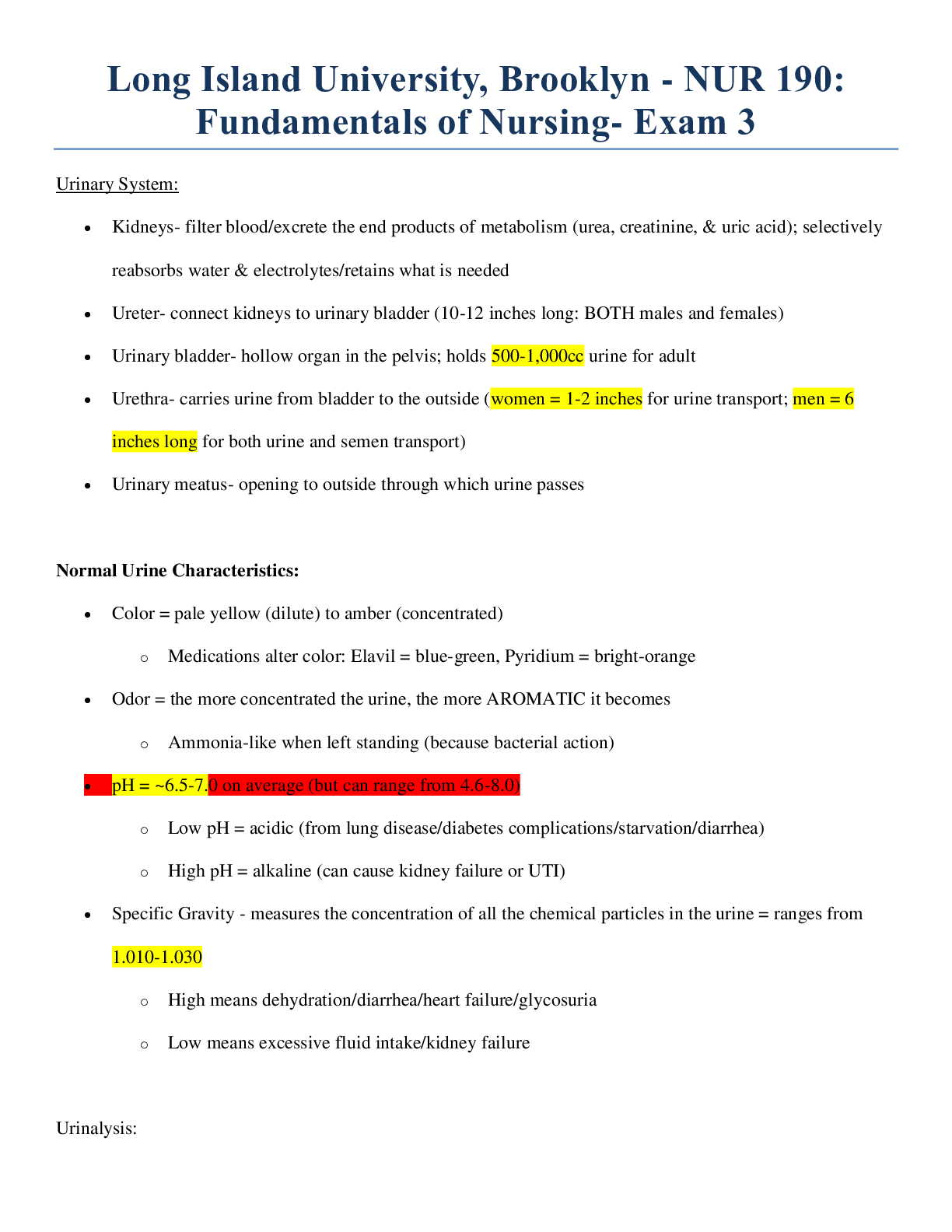




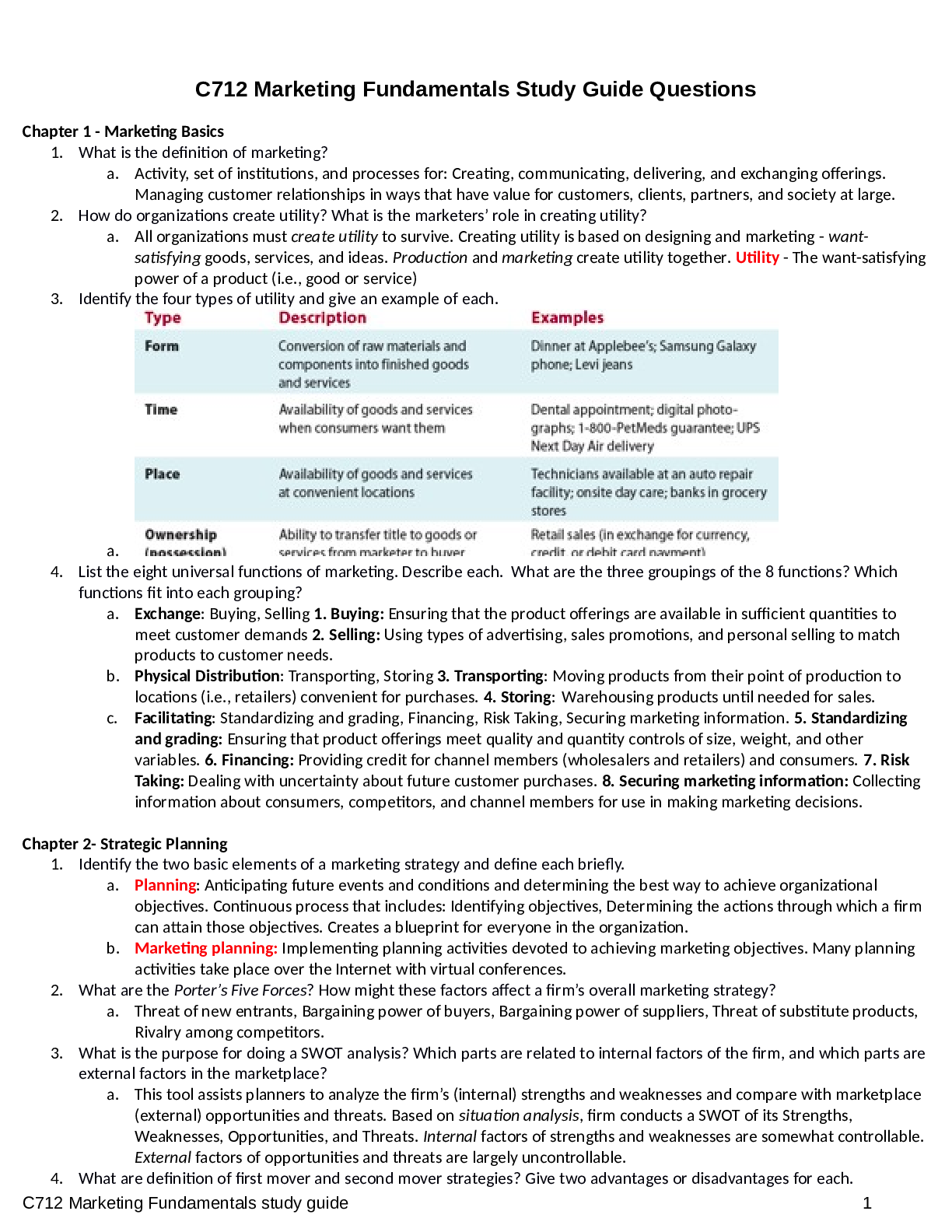


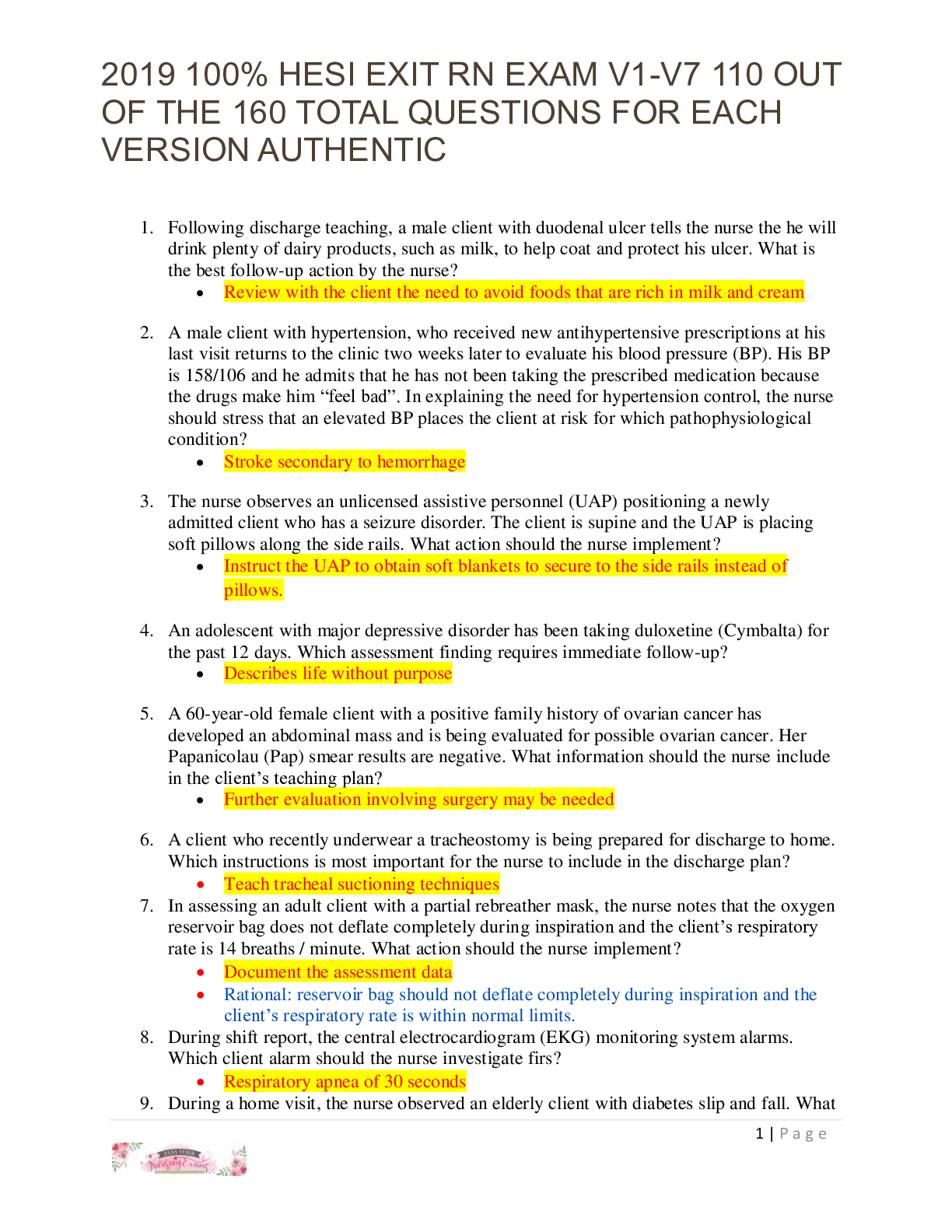

.png)
